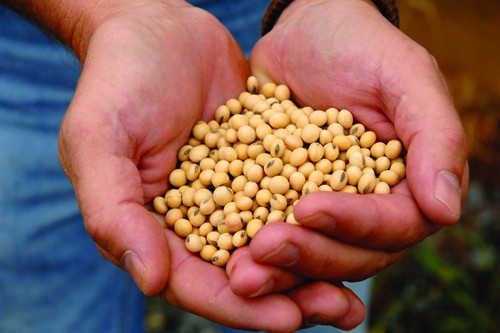
In the small Central American country of El Salvador, natural disasters, civil unrest, gaps in healthcare financing and inefficient distribution systems have left many of the country’s 6 million citizens with chronic nutritional deficiencies. Grades 1 and 2 malnutrition are prevalent in the region, and a lack of low-cost protein contributes to growth and cognitive stunting among communities where the per capita income averages less than $4,000 per year.
But in one of capital city San Salvador’s poorest neighborhoods, the humble soybean is changing lives.
The Programa de Soya San Ramon (San Ramon Soy Project) produces and distributes soy flour to 150 to 200 local children and adults daily, provides low-cost soymilk to a nearby orphanage and conducts workshops to show families how to incorporate soy into traditional foods such as atole (a pudding), tortillas and bakery products. In addition, the project has hosted classes in computer literacy and partnered with the University of San Salvador to teach residents about nutrition.
According to program founder Ann Greig, a 2007 short-term impact study conducted in a rural community outside of San Salvador showed that children in various stages of malnutrition improved by one level (using El Salvador Ministry of Health growth charts as a reference). The initiative to provide soymilk to the children in the orphanage also is being assessed for its impact on children’s growth and development.
Because soybean cultivation is new to El Salvador, the project currently relies solely on imports from Nicaragua and other countries, whose crops fluctuate in quantity according to weather and market conditions. To shore up a more secure supply for the project, Tennessee-based nonprofit Plenty International helped open import channels with Guatamala, worked with the University of San Salvador’s nutrition and agriculture departments to plant soybean trials in the Rio Lempa region and is helping shape a long-term strategy. It is hoped that in the coming years, soybeans will become an important crop — and abundant enough to supply Programa de Soya San Ramon and others.
